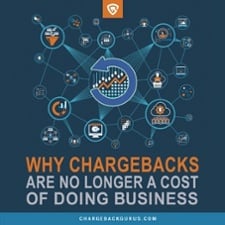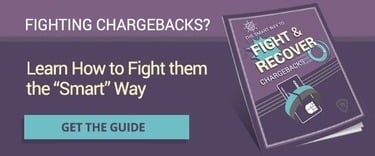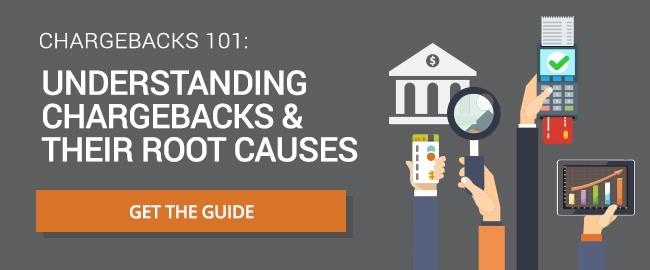Understand Credit Card Chargeback Laws

Chargebacks aren’t just an optional customer service procedure—they’re required by law. While banks and card networks have some leeway in how they handle them, the underlying process is governed by legal guidelines that have been in place since the 1970s.
While merchants usually don’t need to cite federal law in order to successfully fight and prevent chargebacks, it’s important to understand why the process works the way it does and how chargeback rules are applied to debit card transactions and international purchases. What are the laws that mandate and define the chargeback process?
 It may be difficult to imagine a world without payment cards, but they’ve only been around since 1958. Sadly, it didn’t take long for fraudsters and other unethical individuals to start trying to exploit consumers who were unfamiliar with this new financial product. Lenders were pitching cards to consumers without fully informing them about interest rates and other credit terms, or sending them unsolicited cards.
It may be difficult to imagine a world without payment cards, but they’ve only been around since 1958. Sadly, it didn’t take long for fraudsters and other unethical individuals to start trying to exploit consumers who were unfamiliar with this new financial product. Lenders were pitching cards to consumers without fully informing them about interest rates and other credit terms, or sending them unsolicited cards.
Criminals would steal cards and run up charges on other people’s accounts. It was an unregulated industry, and many consumers were rightly concerned that credit cards weren’t worth the risk.
Starting in 1968, the United States government started passing laws to rein in the excesses and abuses of the consumer credit industry, and other countries followed suit. Between then and now, a number of laws and amendments have been passed to further regulate payment cards as new technologies and commercial practices have come about.
For the most part, interpreting these laws is up to the credit card networks and banks that issue cards to consumers. Because they have some discretion to define their own dispute categories and procedures, merchants need to understand each card brand’s specific rules, not just the legalese that justifies them—but knowledge of the law can be helpful when you’re defining your terms of sale and customer service policies, or when contentious disputes are escalated to the arbitration level.
What Laws Govern the Chargeback Process?
Federal regulation of credit card transactions started with the 1968 Truth in Lending Act (TILA). This law did not create the chargeback process, but it did establish a number of important rules for credit card issuers. This law focused on predatory lending practices, requiring issuers to provide specific information about the cost of the credit they were offering, in a standardized and comprehensible format. It was amended in 1970 to prevent lenders from issuing credit cards to consumers who didn’t sign up for them.
The TILA set the stage for the laws that established the chargeback process as we know it: the Fair Credit Billing Act and the Electronic Fund Transfer Act. The specific implementation of chargeback rules is covered under the Uniform Commercial Code, which ensures consistent practices from state to state.
What Is the Fair Credit Billing Act?
The Fair Credit Billing Act (FCBA) of 1974 created chargebacks. It established that consumers are not obligated to pay for billing errors, unauthorized transactions, defective or missing goods, or fraudulent charges. Specifically, the FBCA grants consumers the right to dispute such charges and caps their liability at $50. It also stipulates that consumers are not liable for any unauthorized charges that are made after a card is reported lost or stolen.
Per the FCBA, consumers have 60 days to file a dispute, and the issuer must respond within 30 days of receiving it. They must then investigate and resolve the dispute within two billing cycles (not to exceed 90 days). The chargeback rules handed down by the card networks are all built upon this foundation.
The same year the FCBA was passed, a similar law was introduced in the United Kingdom called the Consumer Credit Act. In the context of chargeback discussions, this law is often referred to as Section 75, which is the part that deals with disputes and chargebacks.
There are some crucial differences between the FCBA and Section 75—for instance, under the US law merchants are solely liable for chargebacks, but UK law holds the merchant and issuer equally liable. That means that merchants outside the UK may be completely unaffected when a cardholder files a Section 75 claim.
What Is the Electronic Fund Transfer Act?
The FCBA only covers credit card transactions and did not anticipate ATMs, debit cards, and other electronic payments that involve direct transfers of money between the consumer and merchant.
 These scenarios were addressed with the passage of the Electronic Fund Transfer Act (EFTA) in 1978, granting consumers 60 days to dispute fraudulent transactions or errors.
These scenarios were addressed with the passage of the Electronic Fund Transfer Act (EFTA) in 1978, granting consumers 60 days to dispute fraudulent transactions or errors.
Consumer liability is capped at $50 if a dispute is filed within two business days or $500 thereafter. Banks have a 45-day window of time to investigate and resolve claims.
Unlike the FCBA, the EFTA does not permit disputes over defective or undelivered goods. This means that friendly fraud, a constant problem with credit card chargebacks, is rarely encountered with debit card or ACH transactions.
How Does the Uniform Commercial Code Affect Chargebacks?
The FCBA doesn’t give a lot of details on how exactly financial institutions are supposed to implement a chargeback policy, but the UCC does. For one thing, it specifies that in the event of a chargeback, issuers can take the settled funds back from the merchant’s acquiring bank. No law restricts acquirers from requiring their merchants to cover these losses, and this is why merchants are, in effect, always ultimately liable for chargeback losses.
Conclusion
A dispute process that gives consumers the opportunity to recover their money in the event of fraud or error is an important part of ensuring trust and confidence in the payment card system. With so many avenues for fraud in the world of e-commerce, it’s hard to imagine that consumers would be willing to entrust their payment information to unfamiliar merchants without any recourse to something like the chargeback process.
The problem is that the core chargeback laws are more than forty years old at this point, and they were not designed to account for high-tech scams and friendly fraud.
Merchants are stuck with chargebacks, but that doesn’t mean you have to passively accept them. Every chargeback should be analyzed upon receipt. Legitimate chargebacks should be accepted, but you should always try to understand why they occurred and take steps to prevent them in the future. Illegitimate chargebacks, on the other hand, should always be fought. Merchants do have the right to represent charges that were disputed under false claims, and with the right evidence you can beat these chargebacks and win back your revenue.
Thanks for following the Chargeback Gurus blog. Feel free to submit topic suggestions, questions, or requests for advice to: win@chargebackgurus.com


